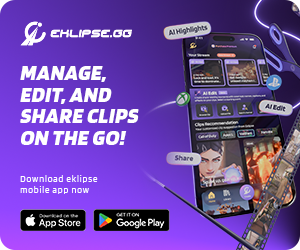
Level Up Your Marvel Rivals Gameplay
Capture your epic wins, clutch moments, and even hilarious fails with Eklipse. Easily create and share highlight reels with your friends—even if you're not streaming!
Learn MoreContent creators are transforming hobbies into profitable careers, shaping the digital landscape as they engage millions daily. From YouTubers and TikTok influencers to podcast hosts, today’s creators are finding ways to monetize their unique voices and talents across diverse platforms.
But with countless income streams available, what can content creators realistically expect to earn? In this breakdown, we’ll dive into the earning potential across popular platforms, uncovering how ad revenue, sponsorships, memberships, and more come together to support creators.

1. Revenue from Ads and Sponsorships: YouTube & TikTok
If you’re on YouTube, you’re likely aware of ad revenue as a main income stream. Here’s a quick look at earnings through Cost Per Mille (CPM) rates:
- YouTube Ad Revenue: CPM (cost per 1,000 views) on YouTube generally ranges from $3–$5 for smaller creators, but popular channels in high-value niches (like finance or technology) can see $10 or more per 1,000 views.
- TikTok Sponsorships: Unlike YouTube, TikTok creators tend to rely more on sponsorships. For example, a TikTok influencer with a moderate following might earn $1,000–$5,000 per sponsored post based on engagement and reach.
Earnings in both cases largely depend on follower count and engagement rates—the higher these numbers, the greater the potential earnings.
2. Memberships and Exclusive Content
Platforms like Patreon allow creators to earn through memberships, where fans pay for exclusive content.
- Patreon Memberships: Monthly memberships typically range between $5–$10 per subscriber, though creators with strong, loyal communities might charge more. For example, with 100 members paying $5 each, you’re looking at $500 per month.
- YouTube Channel Memberships: Similar to Patreon, this feature allows fans to subscribe for perks. Mid-tier creators can earn several hundred to a few thousand dollars monthly depending on fan loyalty.
3. Selling Digital Products: Courses, Ebooks, and More
Educational and informative content creators frequently monetize through online courses and digital products. Think of creators who launch a photography course, a digital art tutorial, or fitness guides.
- Courses on Platforms like Teachable: A successful creator might sell a course for $50–$200, generating significant revenue if promoted well. Courses with specialized or in-depth content tend to fetch higher prices.
- Ebooks and Digital Downloads: These range from $10–$50 depending on the creator’s reputation and niche. Selling 100 downloads of a $20 product equals a respectable $2,000.
4. Crowdfunding and Donations: A Fan-Powered Revenue Source
Platforms such as Ko-fi, Buy Me a Coffee, and direct donations through streaming platforms like Twitch allow fans to support creators financially.
- Fan Donations on Twitch: Streamers can receive direct donations from viewers. Popular streamers report income in the thousands, while smaller creators might earn $100–$500 monthly.
- Crowdfunding on Ko-fi: Here, fans often contribute one-time donations, and some creators make a few hundred dollars monthly.
5. Brand Deals and Affiliate Marketing
Affiliate marketing and brand sponsorships are lucrative avenues for influencers across platforms.
- Affiliate Commissions: Creators typically earn 5%–20% of the sale price for each item sold through affiliate links. For instance, a creator promoting $5,000 worth of products in a month at 10% commission will pocket $500.
- Brand Sponsorships: Mid-sized creators can expect $1,000–$5,000 per sponsored post or video, with rates going up significantly for larger accounts or high-impact campaigns.
6. Podcast Monetization
Podcasts offer unique monetization options, from sponsorships to listener donations.
- Ad Revenue for Podcasts: Smaller podcasts might earn $18–$25 CPM (cost per 1,000 downloads), while popular podcasts in high-demand niches can command higher rates.
- Subscription Models: Platforms like Patreon or Spotify’s new subscription feature allow podcasters to offer bonus content for a monthly fee.
Final Thoughts
Earnings for content creators can differ greatly depending on factors like platform, audience size, niche, and engagement levels. Building a steady income requires creators to diversify their revenue sources, tapping into various monetization options available across platforms.
By spreading out income streams and utilizing multiple platforms, creators can enhance their earning potential and career growth. From ad revenue to digital products and brand partnerships, each step in the creator journey offers opportunities for income—providing creators with the chance to profit and thrive at every stage.
Click here to join our Discord and win the prize!
🎮 Play. Clip. Share.
You don’t need to be a streamer to create amazing gaming clips.
Let Eklipse AI auto-detect your best moments and turn them into epic highlights!
Limited free clips available. Don't miss out!
